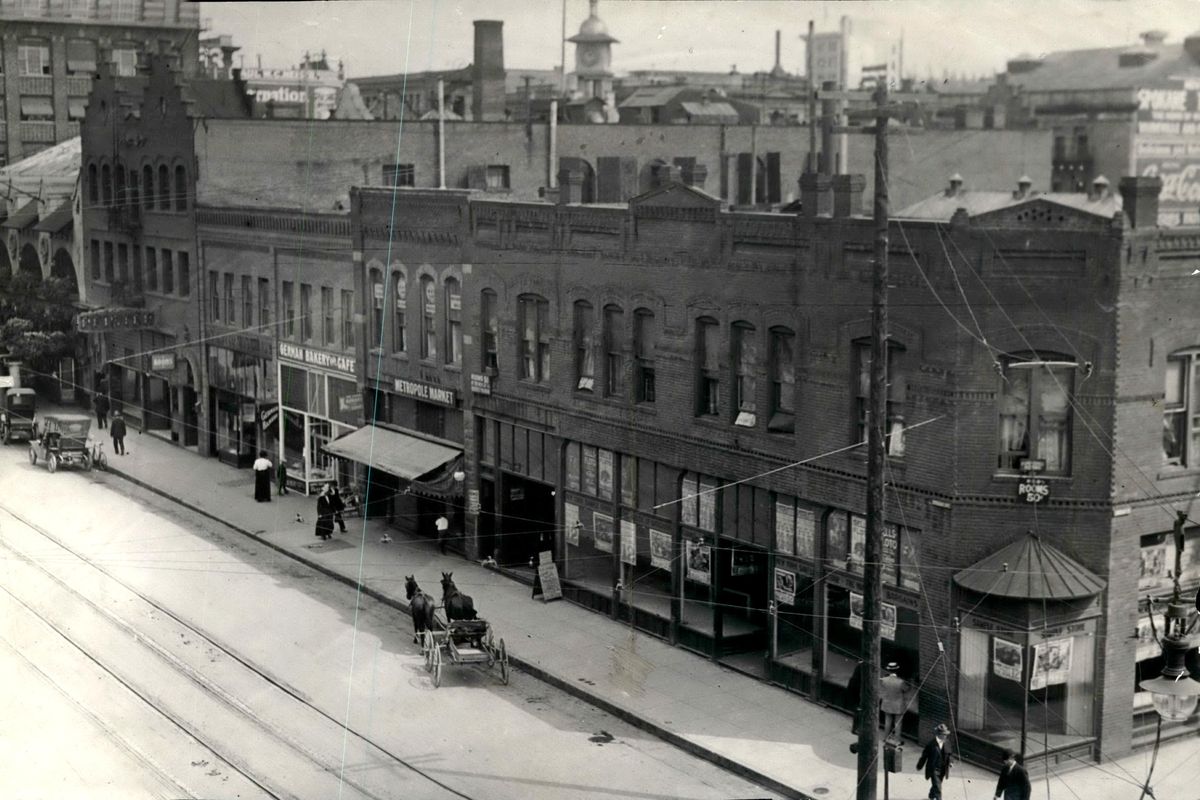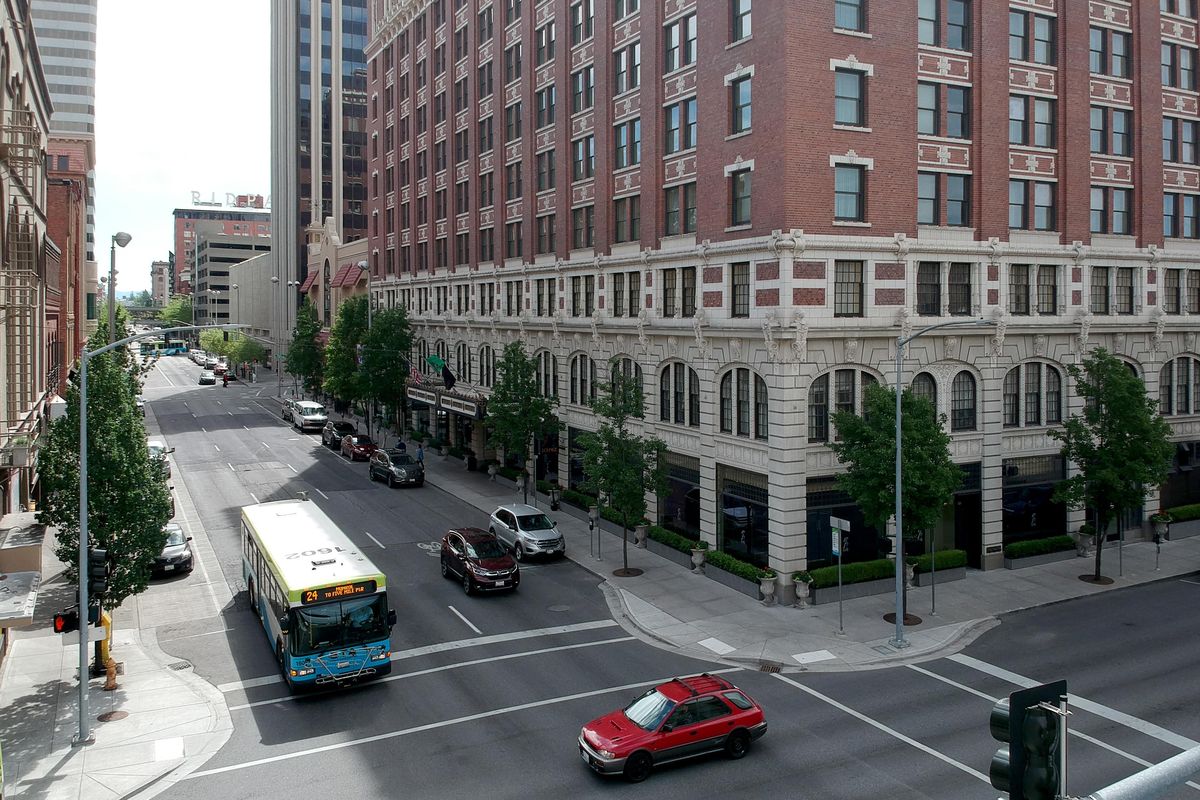Then and Now: The Davenport Hotel
Facing Sprague Avenue before the construction of the Davenport Hotel on the block, there were, right to left, the Allen Building, two small buildings with a grocery and a bakery and the Pfister bar, which stretched from Sprague to First Avenue. At far left is Louis Davenport’s two-story restaurant, which was incorporated into the hotel. (SPOKESMAN-REVIEW PHOTO ARCHIVE / SR)
Twenty-year-old Llewelllyn “Louis” Marks Davenport arrived in Spokane in March of 1889 and helped manage his uncle’s restaurant. When most of the town burned down later that year, Davenport opened his own restaurant in a series of locations before building a two-story brick restaurant at the corner of Sprague Avenue and Post Street in 1900.
As he flourished there, he asked architect Kirtland Cutter to unite the restaurant building with the Pennington Hotel to the south in the popular Mission Revival style, featuring white stucco, arched windows and red tile roof accents.
While there were many restaurants in Spokane, Davenport focused on fine dining for large groups and clubs. The Cutter remodel included transforming the upstairs dining room into the Hall of Doges, with art reminiscent of a Venetian palace.
Before the landmark Davenport Hotel was built, there were several other businesses on the site. The Allen Building, on the corner of Sprague and Lincoln, had ground-floor retail and rooms for rent on the second floor. Signs on the building advertised rooms for 50 cents. East of the Allen were a pair of two-story buildings with a small grocery store and and a bakery and cafe. East of that was the three-story Pfister, a bar, bowling alley and billiard hall that stretched from Sprague Avenue across the block to First Avenue.
Davenport announced his plan for a luxury hotel in 1908 and took in 100 investors to raise the money to build it. His investors believed in the need for a top-flight hotel in Spokane. Stockholders included The Spokesman-Review publisher W.H. Cowles, train magnate James Jerome Hill of the Great Northern Railroad, mining millionaires August Paulsen and John A. Finch and prominent businesses including Washington Water Power, the Centennial Flour Mill, McGoldrick Lumber and Union Trust Company.
Davenport bought up the block surrounding his restaurant and Cutter designed the hotel, which cost more than $2 million and two years to complete. It was significantly expanded in 1917 to 1929.
In 1928 Davenport bought out his stockholders and became the sole owner. He retired and sold the hotel in 1945. He died in 1951.

